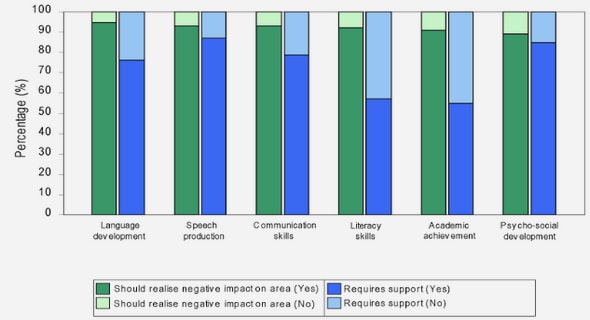(Downloads - 0)
For more info about our services contact : help@bestpfe.com
Table of contents
Chapter 1 INTRODUCTION
1. Plant responses against microbial pathogens
1.1. Plant immunity
1.1.1. PAMP-triggered immunity (PTI)
1.1.2. Effectors-triggered immunity (ETI)
1.2. Signal transduction
1.2.1. Ion Fluxes
1.2.2. Oxidative brust
1.2.3. Activation of MAPKs
1.2.3.1. Mitogen-activated protein kinases (MAPKs)
1.2.3.2. Calcium-dependent protein kinases (CDPKs)
.
1.2.4. Nitric oxide
1.2.5. Role of plant hormones
1.3. Plant defense response
1.3.1. Strengthening of cell wall
1.3.2. Synthesis of antimicrobial compounds
1.3.3. Production of pathogenesis related proteins (PR proteins)
1.3.4. Hypersensitive response
1.3.5. Systemic resistance
1.3.5.1. Systemic acquired resistance..
1.3.5.2. Induced systemic resistance
2. Nitric oxide (NO), a key player in plant defence signaling
2.1. NO synthesis
2.1.1. Basic concepts of NO synthesis in animals
2.1.2. Biosynthesis of NO in plants
2.1.2.1. Oxidative pathways
2.1.2.1.1. Arginine dependent NO production
2.1.2.1.2. PAOX pathway
2.1.2.1.3. Hydroxylamine pathway
2.1.2.2. Reductive pathways
2.1.2.2.1. NR-dependent NO production
2.1.2.2.2. NI-NOR pathway
2.1.2.2.3. Mitochondrial pathway
2.1.2.2.4. Xanthine oxidoreductase (XOR) pathway
2.1.2.3. Non enzymatic pathways
2.2. Mechanism of action of NO signaling
2.3. Role of NO in plant defense
2.3.1. NO production in different plant pathogen context
2.3.2. NO production mediates Plant defense
3. The oligogalacturonides/Arabidopsis thaliana model
3.1. The oligogalacturonides (OGs)
3.2. OGs and plant defense responses
3.3. OGs and induced resistance
Chapter 2 Basic concepts of NO signaling in animals Metal Nitrosylation
S-Nitrosylation
Tyrosine nitration
Interplays between NO and Ca2+
NO signaling in plants
Interplays between NO and Ca2+
NO act as a Ca2+ mobilizing messenger
Underlying mechanisms
Impacts of the NO/Ca2+ pathways
Interplays between NO and protein kinases
NO modulates MAPK activities
NO and Ca2+-dependent protein kinases
NO and SnRKs
Interplays between NO and ROS
Impacts of the NO/ROS balance in HR
Candidate sites of interaction between NO and ROS during the HR
A protective molecule?
Conclusion
Chapter 3
1. Material and Methods
1. Biological materials
1.1. Plant material
1.2. Elicitor
1.3. Fungal pathogens
2. Methods
2.1. Genotyping
2.2. NO detection by spectrofluorometry
2.2.1. DAF-2DA detection method
2.2.2. CuFL detection method
2.3. In vivo assay of Nitrate Reductase
2.4. Total RNA islation
2.5. cDNA synthesis
2.6. Analysis of transcript accumulation by Real time qPCR
2.7. PCR fragment cloning
2.8. Immunodetection of phosporylated mitogen activated protein kinases
2.9. In gel kinases assay
2.10. Reactive oxygen species measurement in Arabidopsis thaliana
2.10.1. DAB staining
2.10.2. Detection by chemiluminescent assay
2.11. Transcriptome analysis
2.11.1. RNA extraction, cDNA synthesis and labeling
2.11.2. Array hybridization and scanning
2.11.3. Microarray data analysis
Chapter 4 (Part 1)
Chapter 4 (Part 1)
INTRODUCTION
Material and methods
Plant material and growth conditions
NO measurements
Gene expression analysis by quantitative Real Time-PCR
In vivo Nitrate Reductase activity
H2O2 measurement
Botrytis cinerea culture and infection method
Results
OGs induced NO production in Arabidopsis thaliana
OGs induced NO production is L-NAME sensitive
NR is involved in OGs induced NO production
Ca+2 influx modulates NO production in response to OGs
NO modulates OGs triggered ROS production in Arabidopsis thaliana
NO regulation of OGs responsive genes
NO participate to basal resistance to fungel pathogen Botrytis cinerea
Discussion
Enzymatic sources of OGs induced NO production
OGs induced NO production depends on Ca+2 influx
NO production modulates AtRBOHD-mediated oxidative burst
OGs induced NO dependent genes are involved in A. thaliana basal resistance to
B.cinerea
Chapter 4 (part 2) Relationship between MAPK/CDPK activities and OGs induced NO production
Results
OGs triggered MAPK phosphorylation, independently of NO production
CDPK are regulated by OGs, independently of NO production
Role of CDPKs in OGs-induced NO production
Role of CDPKs A. thaliana / B. cinerea interaction
Role of CDPKs in the target genes of NO
Discussion
MAPK activation is independent of NO production
CDPK control NO production, NO-mediated response to OGs and resistance
to B. cinerea
Chapter 5 INTRODUCTION
RESULTS
1. Transcriptomic response of A. thaliana leaves to OGs treatment
1.1. In silico functional categorization of OGs-induced genes
1.2. Comparative analysis of the A. thaliana transcriptomic response to OGs
2. Nitric oxide-regulated transcriptomic response to OGs
2.1. Identification of NO-responsive genes
2.2. In silico functional annotation of NO-responsive genes
2.3. Identification of transcription factor binding site (TFBS)
2.4. Functional characterization of NO-responsive genes
2.4.1. Validation of microarray data by RT- qPCR
2.4.2. Genotyping of T-DNA insertion mutant lines
2.4.3. Role of candidate genes in Arabidopsis thaliana / Botrytis cinerea interaction
3. DISCUSSION
Transcriptomic response to oligogalacturonides
Categorization of NO-responsive genes
Functional characterization of NO-responsive genes in the B. cinerea/A. thaliana
interaction
Functional analysis of transcription factors
Functional analysis of disease related proteins
CONCLUSIONS AND PERSPECTIVES
REFERENCES



